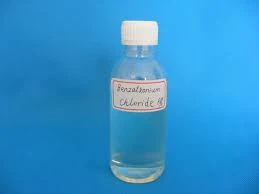Coagulants and flocculants in the process of water purification and treatment efficiency
Coagulants and Flocculants in Water Treatment
Water treatment is a critical part of ensuring the safety and quality of drinking water, as well as managing wastewater. Among the various processes involved, the use of coagulants and flocculants plays a pivotal role in removing impurities and suspended particles from water. This article will explore the definitions, mechanisms, applications, and benefits of these two key components in water treatment processes.
Definitions and Mechanisms
Coagulants are chemical agents that promote the aggregation of suspended particles in water, helping to form larger clumps or coagulates. Commonly used coagulants include aluminum sulfate (alum), ferric chloride, and polyaluminum chloride. The primary mechanism through which coagulants work involves the neutralization of the electrostatic charges on particles. When particles are suspended in water, they usually carry a negative charge, which keeps them dispersed. Upon adding coagulants, positively charged ions neutralize these charges, allowing the particles to come together and form larger aggregates.
Flocculants, on the other hand, are chemical agents that assist in the aggregation of particles, promoting the formation of larger flocs that can be easily removed from water. Flocculants are typically high molecular weight polymers, such as polyacrylamide. They work through a process called bridging—the long chains of the flocculant molecules connect different particles together, forming a loose network that traps water and enhances the efficiency of solid-liquid separation.
Applications in Water Treatment
In drinking water treatment plants, coagulants are often the first step in the removal of turbidity, color, and microorganisms. After the coagulation process, water is usually subjected to sedimentation, where the heavier coagulated particles settle at the bottom. Following sedimentation, additional treatments like filtration and disinfection further enhance water quality.
coagulants and flocculants in water treatment

Flocculants are often applied in conjunction with coagulants to improve the efficiency of the sedimentation process. By using flocculants, treatment plants can reduce the duration of sedimentation and improve the clarity of the final effluent. This combination is particularly useful in treating water with high levels of turbidity or organic matter.
In wastewater treatment, both coagulants and flocculants play significant roles in sludge management and the removal of contaminants. They help in consolidating sludge, making it easier to handle and dispose of, while also improving the overall performance of the treatment process.
Benefits of Using Coagulants and Flocculants
The use of coagulants and flocculants in water treatment offers several benefits. Firstly, they significantly improve the removal efficiency of suspended solids and other contaminants, resulting in cleaner and safer water. Secondly, they aid in reducing the costs associated with water treatment processes by enhancing sedimentation and filtration efficiencies, leading to lower energy and operational costs.
Furthermore, the application of these chemicals can also lead to improved water quality, which is essential for public health. Effective removal of pathogens and harmful substances not only complies with regulatory standards but also protects communities from waterborne diseases.
Conclusion
In conclusion, coagulants and flocculants are indispensable agents in the water treatment industry, significantly enhancing the removal of impurities and ensuring the delivery of clean water. With ongoing advancements in chemical formulations and process technologies, the efficacy and environmental sustainability of these applications continue to improve. As global concerns about water quality and scarcity remain paramount, the role of coagulants and flocculants will undoubtedly grow, ensuring that we can provide safe, high-quality water for present and future generations.
-
Pbtc Scale InhibitorPBTC: A Scale Protector for Industrial Water TreatmentNewsAug.05,2025
-
Organic Phosphonate: An Efficient Defender in the Field of Scale InhibitionNewsAug.05,2025
-
Hydrolyzed Polymaleic Anhydride: Green Pioneer in Scale Inhibition FieldNewsAug.05,2025
-
PAPEMP Polyamino Polyether Methylene Phosphonic Acid For SaleNewsAug.05,2025
-
Flocculant Water Treatment: A Pioneer in Purification in the Field of Water TreatmentNewsAug.05,2025
-
Benzyl Isothiazolinone: An Efficient and Broad-Spectrum Antibacterial Protective GuardNewsAug.05,2025





